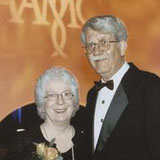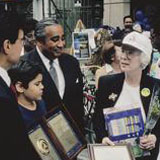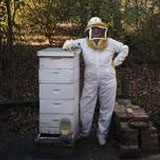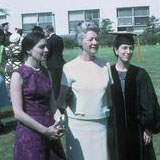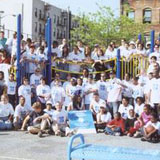Biography: Dr. Barbara Barlow

Year: 1988
Achievement: Dr. Barbara Barlow founded the Injury Free Coalition for Kids.
I never went into medicine to make money, but because I wanted to be a doctor who cares for children. I especially wanted to offer first-class pediatric service in a poor community.
I wanted to provide poor children with the same quality of care that middle-class children received.
The fact that all trauma is preventable, means that not to develop programs to prevent injuries is not doing your job as a doctor — it's almost immoral.
Barbara Barlow was the first woman to train in pediatric surgery at Babies Hospital, Columbia University Medical Center (now called Babies' and Children's Hospital of New York). By researching and documenting the causes of injuries to children in Harlem, and increasing public education about their prevention, she has helped to dramatically reduce accidents and injuries to inner-city children in New York and throughout the United States.
Born in 1938, Barlow grew up in rural Lancaster Pennsylvania, where she still spends many weekends. She has had a lifelong desire to care for children in need. Her father, who believed that she would some day have a career in medicine, died when she was sixteen and her younger sister was eleven. To support her daughters, her mother returned to school for a degree in psychology and became a guidance counselor and assistant professor of psychology. By her mother's example, Barlow came to believe that with hard work, she could achieve anything.
After studying psychology on a scholarship at Vassar College, Barlow earned her M.D. degree in 1967 from the Albert Einstein College of Medicine in New York City. The director of pediatric surgery there helped Barlow obtain a training fellowship at Babies Hospital Columbia University Medical Center (now called Babies' and Children's Hospital of New York). She became the first woman to train in pediatric surgery at Babies Hospital.
Barlow changed her plan to become a medical missionary abroad when she did a surgical residency in the Bronx and noticed a critical need for pediatric medical services there. "I wanted to provide poor children with the same quality of care that middle-class children received," she said.
One of the first things Barlow noticed when she came to Harlem was the high rate of admissions of children suffering from preventable injuries. With a colleague, she compiled data showing that the injury rate for this area was twice the national average. The deadliest accidents were falls from windows.
"It made me very angry. It was obvious we needed to do something to keep children safe, to make places for children that were safe," she recalls. By 1979, Barlow was instrumental in getting New York City to issue an ordinance requiring landlords to install window guards. She also participated in an educational campaign, "Children Can't Fly," warning parents of the danger of children falling from open windows in high-rise buildings. By 1981, the number of injuries to children falling from windows had decreased in the Washington Heights neighborhood by 96 percent.
Barlow was also concerned that many children were being injured by broken, rusty equipment on Harlem's school playgrounds. Since there were few organized sports or other after-school programs, others were struck by cars while playing in the streets after school.
Barlow sought funds to repair Harlem's playgrounds and enlisted community organizations. In 1988, the Robert Wood Johnson Foundation gave her a three-year grant of $125,000 a year to do a photo survey of the playgrounds, document their dangers, and present a report to city commissioners. With support from the city's Parks Department, she enlisted an architect to design whimsical, low-cost playground structures, and artists and volunteers to paint murals.
Since 1991, more than forty new playgrounds have been built in Harlem, and a coalition of funding sources and Harlem community organizations now offer after-school activities ranging from sports to creative art classes. Through the "Injury Free Coalition for Kids," developed by Barlow with support from the Robert Wood Johnson Foundation, similar programs operate in Los Angeles, Atlanta, Philadelphia, and seven other sites around the country, each reflecting the needs and conditions of the community it serves.
Dr. Barlow now works with the National Association of Children's Hospitals and related institutions to extend the program to forty cities nationwide.
What was my biggest obstacle?
I don't think that I can identify a professional obstacle. My mother was correct —work harder than everyone else and you will reach your goals in spite of the fact that you are a woman.
When I arrived at Harlem Hospital in the 1970s, a man warned me, "Doctor, don't come here. You'll get hurt. Go Away." I didn't listen. Now I've been here so long I forget I'm white.
Who was my mentor?
The most important mentor was my mother—Esther Stoll Barlow—who taught me that with hard work I could achieve anything. Although she was an at-home mother until my sister and I entered school, she then returned to teaching junior high school. When my father died leaving her with an 11-year-old, my sister, and a 16-year-old, me, to raise and educate she entered graduate school at Temple University, working during the day and commuting to Philadelphia to study nights and weekends. She became a guidance counselor and then an assistant professor of psychology at Millersville University in Millersville, where she ran the guidance clinic. She encouraged us to apply to the private school in town for high school, The Lancaster Country Day School, where we both received scholarships. She had us aim high for college and helped us apply for scholarships. Both my sister and I graduated from Vassar College. As I continued with graduate school and medical school, always on scholarships, she was always there as a mentor, friend, and mother.
During surgical training there were three pediatric surgeons who I consider mentors. Dr. Keith Schneider, director of pediatric surgery at Albert Einstein College of Medicine, helped me obtain a training fellowship at Babies Hospital Columbia Presbyterian Medical Center where I was the first woman to train in the program. Dr. Thomas Santulli, director of pediatric surgery at Babies Hospital, directed me into an academic career in pediatric surgery and taught me how to organize a pediatric surgical service. Dr. Alex Haller, director of pediatric surgery at Johns Hopkins Hospital in Baltimore, Maryland supported my work in trauma and injury prevention, making sure that I was appointed to national committees and that I was asked to lecture at national meetings.
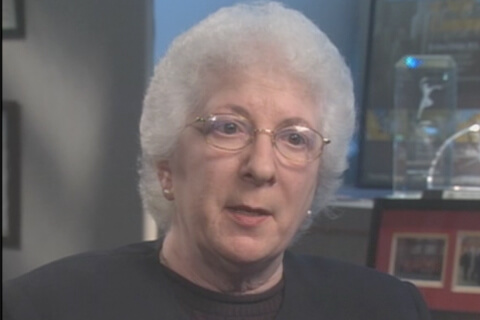
Dr. Barbara Barlow
Dr. Barbara Barlow
In 1975 I came to Harlem as Chief of Pediatric Surgery. I wanted to work in a public hospital, because I didn't want to do private practice. I wanted to offer medical care to children who perhaps would not get it because they couldn't afford to pay, or because they had poor insurance, and so I looked at the public hospitals in New York City, and I chose Harlem. As Director of the Service, of course, I knew every child who came into the hospital and so I saw children falling out windows, being hit by cars, being injured in playgrounds. And in those days, we had a lot of children being shot and assaulted. And I felt that there must be some way we can make this community safer for children because this is not an appropriate thing to happen to anyone's child. When children came in severely injured, dying from injuries, permanently disabled from injuries-it broke my heart. Really. I used to cry with the parents, and I couldn't bear anymore to see this happening without trying to do something to make things better. So I constantly wrote grants to find funding to make an Injury Prevention Program that would involve the community and would make it a safer place for children. Basically, what the staff did, is they went block to block and mapped the community. We didn't find any commercial maps of Harlem in those days. The maps of Manhattan cut off at 110th Street, so that we had to make our own maps. So we knew where the playgrounds were, where the schools were, where the churches were, so we would understand the community block by block, and we did that. And we also used consumer product safety standards, and evaluated every playground in Harlem, and we took pictures. And of course, they all violated consumer product safety standards. And while we did that, we involved the community in the process. We all have a responsibility to people in the community. Everybody has a responsibility for building good communities, good places to raise children. Everybody has a responsibility to see that every child has a chance in this life, has a good education, has good after-school things to do, good sports, good recreation- that's all our responsibilities. Not just the doctors'. Harlem is a very special community. It's like a small town. And they said maybe it was so successful because it was Harlem. My career as a pediatric surgeon and as a surgeon has been so enriched by my work in the community, with the community, for children. I would have never been able to predict this when I was a student. But it came naturally, in the course of what I was doing and what I was seeing.




